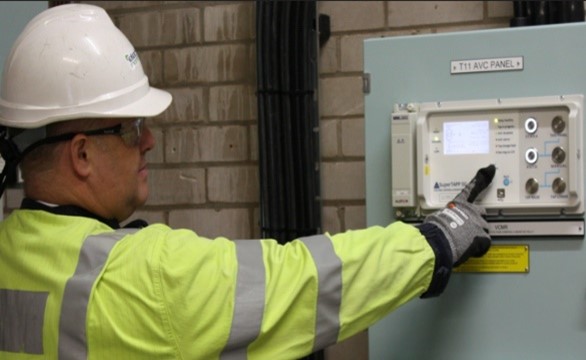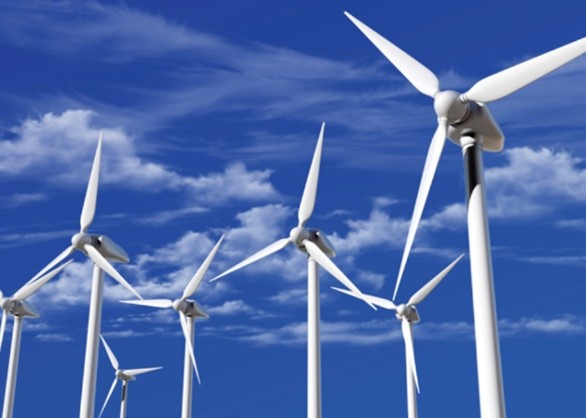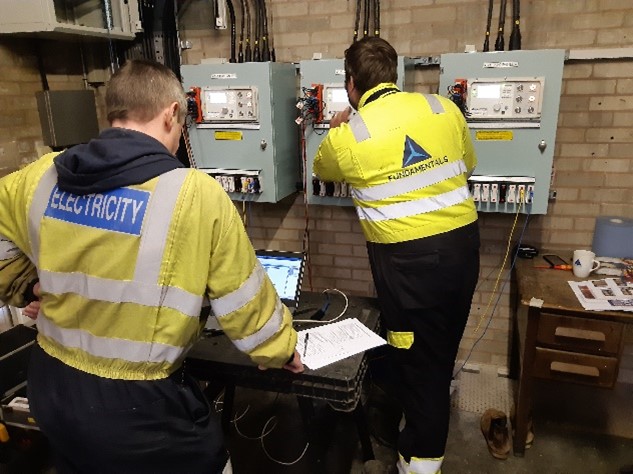Innovation Update November 2022
Innovation update November 2022
In this issue we share good news from Ofgem on our Second Tier Reward application, provide an update on our involvement at The Summit, introduce our new BiTraDER and NIA projects, and recognise some important firsts on QUEST.
The Summit 2022
 We attended The Summit (formerly the Energy Networks Innovation Conference) in Glasgow on 28-29 September. The Summit is run by Energy Networks Association in conjunction with Innovate UK, BEIS, and Ofgem and provides an annual opportunity for energy innovation stakeholders to meet and network, share learning and collaborate to help meet key industry challenges. This year, we presented on several of our projects, including QUEST, BiTraDER, ATMS, LV Predict and Hyperspectral Imaging, in addition to our Community Energy plans and DSO Strategy.
We attended The Summit (formerly the Energy Networks Innovation Conference) in Glasgow on 28-29 September. The Summit is run by Energy Networks Association in conjunction with Innovate UK, BEIS, and Ofgem and provides an annual opportunity for energy innovation stakeholders to meet and network, share learning and collaborate to help meet key industry challenges. This year, we presented on several of our projects, including QUEST, BiTraDER, ATMS, LV Predict and Hyperspectral Imaging, in addition to our Community Energy plans and DSO Strategy.
The conference was successful – our presentations were well-attended, we were able to pick up some learning from projects underway on other distribution networks and information on new technologies being developed by third parties, and we had a lot of engagement on our stand. This was our first in-person event since 2019, and the team enjoyed sharing project updates and meeting industry stakeholders in a familiar environment.
Second Tier Reward success
 Our efforts in delivery of the CLASS project were recently recognised by Ofgem through their positive decision on our Second Tier Reward application.
Our efforts in delivery of the CLASS project were recently recognised by Ofgem through their positive decision on our Second Tier Reward application.
This discretionary reward seeks to imitate the commercial benefits of innovation by rewarding DNOs for exceptional performance in delivering innovation projects via the Low Carbon Networks Fund.
Introducing BiTraDER
 BiTraDER is one of our flagship innovation projects, where we are looking to investigate, develop and trial, through simulations and live on our network, a new solution for connected resources to trade their curtailment obligations in a peer-to-peer market, completely independent of the DNO.
BiTraDER is one of our flagship innovation projects, where we are looking to investigate, develop and trial, through simulations and live on our network, a new solution for connected resources to trade their curtailment obligations in a peer-to-peer market, completely independent of the DNO.
We will be facilitating the new market by providing information to an independent trading platform, where connected resources will be able to register and then trade their curtailment obligations bilaterally in the event of a forecast constraint. The project aims to provide more choice to connected customers on ‘flexible’ or ‘curtailable’ connections, who would otherwise be curtailed in the event of a constraint on the network. It also provides another revenue stream to connected ‘firm’ or ‘non-curtailable’ connections who are open to accepting curtailment in return for payment.
The project also aims to facilitate greater availability of flexibility for the DNO and ESO and greater uptake generally for ‘flexible’ or ‘curtailable’ connection options.
Following official kick off earlier this year, the project has recruited 17 commercially connected participants to the project to date, and has begun to engage with customers on the development of the trading market – how the trades should be governed (i.e. the ‘trading rules’) and how the trading platform should function and look from a user perspective.
To learn more about the project please visit our BiTraDER webpage, where you can also register your interest in helping us to develop the trading rules, and take part in our simulation or live network trials.
Two firsts on QUEST
 We have achieved two successful “firsts” with the QUEST project:
We have achieved two successful “firsts” with the QUEST project:
- We performed CLASS style PFR (Primary Frequency Response) trips and closes on 33kV grid transformer circuit breakers (CB) at Chadderton Grid.
- We successfully performed PFR trips and closes on a three-transformer primary substation’s 6.6kV CBs, with both bus-section 6.6kV CBs closed. This was achieved at Greenhill Primary.
These are significant because they increase the potential magnitude of a CLASS/ QUEST high speed demand reduction response to frequency events. This may be of interest to the ESO as this could significantly reduce costs to consumers in this market area.
Progress on Smart Street rollout
 With less than 6 months remaining before the planned project end date, the majority of the new onsite equipment has now been installed, with only a handful of sites left to complete.
With less than 6 months remaining before the planned project end date, the majority of the new onsite equipment has now been installed, with only a handful of sites left to complete.
Significant work is ongoing to integrate these units with our central Network Management System, such that this new equipment can be remotely controlled, and the network voltages optimised to deliver reduced energy consumption for our customers.
Unfortunately, the project has not been immune to the recent global supply issues, which have resulted in some of the equipment needed to mesh our low voltage network, to deliver further energy savings, being delayed into 2023 – beyond the planned completion date. ENWL are continuing to progress this work with our suppliers and will add these benefits to those from the On Load Tap Changers as soon as possible.
New Network Innovation Allowance (NIA) projects
We have recently registered two new NIA projects on Energy Networks Association’s portal, details below. The NIA funds smaller technical, commercial or operational projects directly related to our network that have the potential to deliver financial benefits to ourselves or our customers, or preparatory innovation projects for further Network Innovation Competition projects.
- Automated Transformer Monitoring System (ATMS) – Apr 22-Jul 23: this project will see the upgrade of a number of Totus units and look to integrate the data gathered into ENWL’s Chime database.
- Needs based segmentation of Low Income and Vulnerable (LIV) customers – Sept 22-Sept 23: this project will look at how best to classify low income and vulnerable customers and identify their energy needs and how these can be supported.
For the latest on these and our other NIA projects, please visit our NIA page using the link below.
Useful links
- Our innovation strategy
- Our BiTraDER project
- Our NIC project QUEST
- Our Smart Street IRM project
- Our NIA Projects
- Meet the Electricity North West innovation team
Or contact us at innovation@enwl.co.uk.